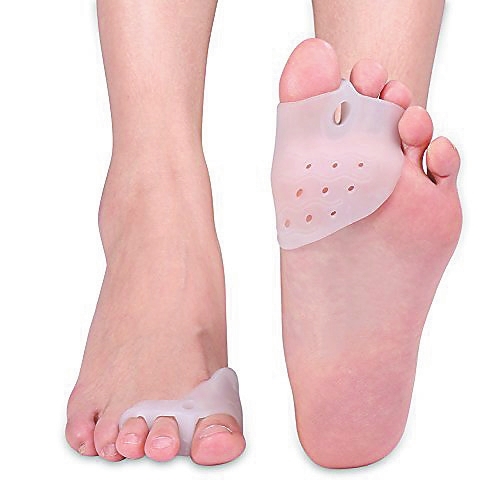
THOSE painful, boney bumps that form on the insides of the big toe joint are called bunions and they can cause more than just an odd-shaped foot. For many patients, the gradual pressure from the big toe leaning on the second toe can make it painful to wear everyday shoes or even walk. “The reason why you have [a bunion] is mostly a genetic reason,” explained Dr. Ebonie Vincent, of TLC’s hit show “My Feet Are Killing Me.” “But it’s made worse by the type of shoes that you wear. It’s basically a bone in your foot that’s essentially twisted to the side, so it doesn’t have the weight-bearing surface.” Vincent explained that the bunion causes friction between the shoe and the side of the foot, which can cause bumps and pain. An X-ray can allow for a doctor to check the alignment of the toes and assess the joint damage caused by the bunion, according to the American Academy of Orthopaedic Surgeons (AAOS). Once the case is assessed, treatment options can be discussed depending on severity. In some cases, non-surgical options may bring relief and can include a change in footwear, the addition of padding, orthotics, icing and even medications, according to AAOS. But in more severe cases, surgery may be recommended to realign the bone, ligament, tendon and nerves, so that the big toe is brought back to the correct position. “In order to fix the bunion, you really have to rotate the bone back over to make it straight,” Vincent said, adding that it’s different than another condition called hammertoes which can impact the foot’s other digits. While there are several different surgeries a doctor may suggest, recovery for bunion patients typically requires several months of healing, follow-up appointments and physical therapy. With hammertoes, Vincent said, the foot is experiencing balance issues with the tendons on the lesser toes. “You have tendons on the top and tendons on the bottom, and sometimes the bottom tendon just wins, and you’re left with like a claw,” Vincent said. “Over time, the joint itself kind of fuses together in that position and creates a hammering digit.” A doctor may seek to correct the toes surgically in order to prevent calluses and ulcers forming on the bottom of the toes, she said.(SD-Agencies) | 
